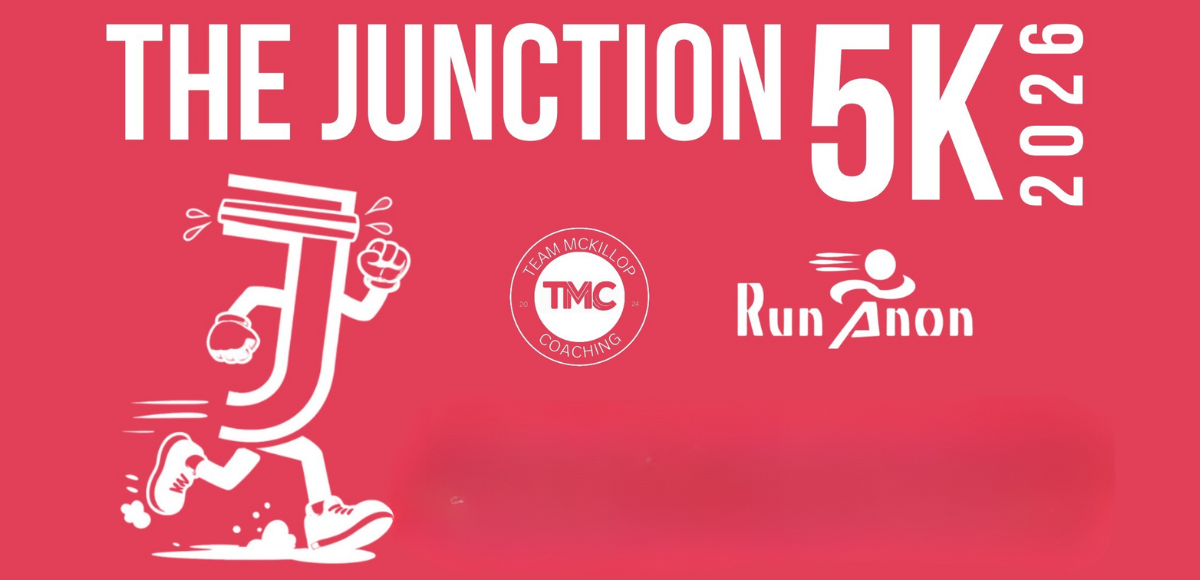Seven Weeks 'Til Dublin: How to Avoid Marathon Training Pitfalls
It's September already and it's somehow less than seven weeks until the Dublin Marathon! With race day looming on the horizon we offer our five key tips to keep training smart and stay on course (and hopefully give you a few laughs too!)

“If you’re already thinking about dropping out, don’t worry—you’ve seven weeks to make up your mind.”
As the Dublin Marathon starts to appear on the horizon, September marks a very important phase in your training. With just under seven weeks to go, you’re either feeling great and full of energy… or you’re seriously questioning every life decision that’s brought you to this point, along with your will to live. Either way, the choices you make now can have a massive impact on race day. Let’s take a look at what you should be doing—and probably more importantly, what you should definitely avoid — at this crucial stage.
Consistency is Key
By now, you’ve built a solid foundation in your training. In theory. If your idea of ‘foundation’ is “I’ve done one long run I’m sorted now,” you might want to reconsider. But for the rest of us, it’s all about consistency.
Keep your long runs going, but don’t go mad and think now’s the time to crank out a marathon distance in training. Remember, you’re preparing for a marathon, not starring in a reality show about how to wreck your knees. So, stick to your plan, and if you feel a niggle coming on, ease up. No one will be impressed if you hobble to the start line like John Wayne.
Monitor Your Training Intensity
Now, I know you’re thinking, “Surely, if I just keep pushing harder, I’ll get fitter faster!” No. That’s not how this works. That’s how injuries work. Stick to a mix of easy runs, tempo sessions, and intervals, and for the love of god, pace yourself. You’re not Usain Bolt. In fact, if you see anyone who is running like Usain Bolt during the marathon, they’ve clearly lost their mind.
Make sure your sessions aren’t too hard or too easy—think of it like Goldilocks, but with fewer bears and more Lycra. Push yourself enough to feel it, but don’t go so hard you spend the rest of the week wondering if your legs have been replaced with cement blocks.
Fine-tune Your Nutrition
This is the perfect time to fine-tune your marathon diet—by which I mean figuring out which gels don’t turn your stomach inside out. If you’ve ever been 30km into a run and realised your carefully chosen gel is basically a fast track to the nearest toilet (or field), you know what I’m talking about.
Now’s the time to experiment with what works for you. Carbs are your friend (finally, a valid excuse for all that pasta!), but don’t lose the run of yourself (pardon the pun). You want to efficiently fuel your runs, not become a human breadstick. And hydration—let’s just say, if you’re not hydrating properly now, you’ll find out the hard way on race day when you’re desperately eyeing the water stations like Indiana Jones stumbling onto an oasis.
Prioritise Sleep and Recovery
You’ve heard it a million times, but sleep is everything when you’re training for a marathon. Seven to nine hours a night should do the trick. Think of it like this: your body’s repairing itself while you sleep, which is good because during your runs, you’ve basically been treating it like a stolen car on a joyride.
And recovery isn’t just lying down and hoping for the best. Foam rolling, stretching, and the occasional massage are very important too. Yes, foam rolling is like medieval torture, but at least no one’s filming it to put on Instagram (hopefully). Plus, the pain means it’s working, right?
Listen to Your Body
Speaking of pain, you have to listen to your body. If something’s hurting more than a little, that’s a symptom —not a challenge. I know, it’s tempting to power through like you’re starring in your own sports documentary, but this is real life, not an installment of Rocky.
If you’re dealing with something more serious than the usual marathoner’s aches and pains, take it easy. No one will judge you for cutting a session short if it means avoiding a full-blown injury (and if they do, just ask them how many marathons they’ve done lately). The only thing worse than limping to the finish line is not making it there at all.
Conclusion
September is your time to shine—but not too brightly, because remember, we don’t want to burn out before race day. Stick to your plan, fuel smartly, recover properly, and keep an eye on any warning signs from your body. Do all that, and you’ll be cruising into October like a marathon-running legend—or, at the very least, someone who’s slightly less terrified of what’s to come.
Now go out there, stay the course, and just remember: if all else fails, the Dublin Marathon has plenty of pubs along the route (so I’m told).

Ever wanted to work for a running company? Here’s a job for you!

Moycarkey Coolcroo AC Notes - January 13th

The Junction 5K Lands in Antrim this March

Tips to Stop Your Running Resolutions from Slipping

Fay Top 20 at World Cross as Irish Runners Break National Records in Valencia at the Weekend

How to Watch Irish Athletes in Action in the Valencia 10K Today
